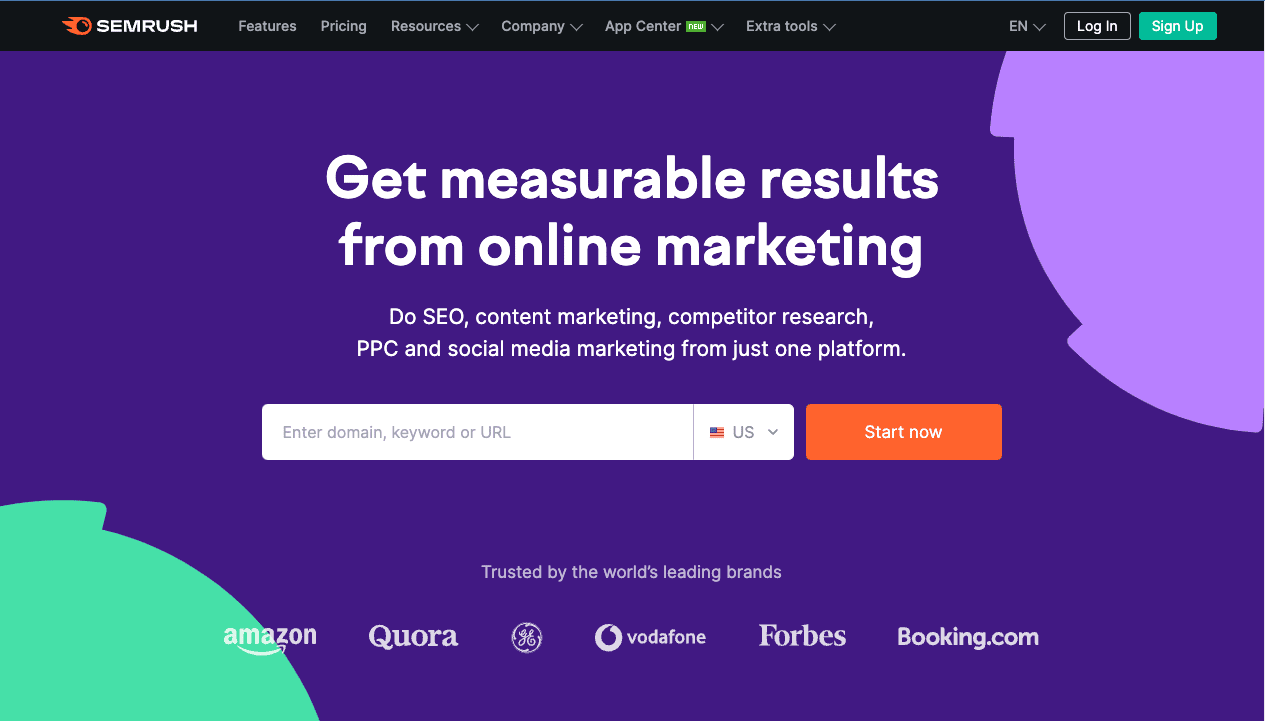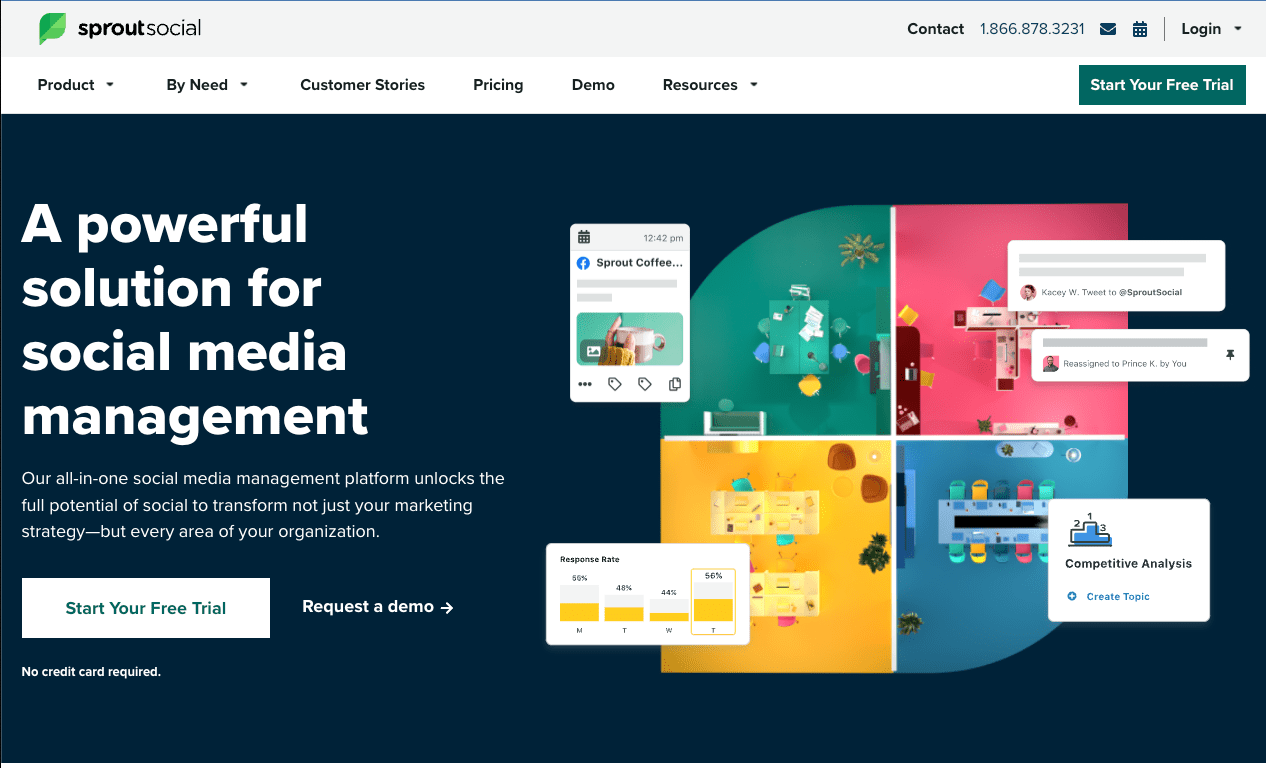What are the four stages involved in competitor analysis?
If you’re serious about having a successful business, then performing a marketing competitor analysis should be on top of your priority list.
It doesn’t take a Nobel prize winner to understand that being able to track competitors is highly beneficial – it’s important to be aware of who your competitors are and what strategies they are using.
That way, you can keep an eye on their marketing efforts and use their insights to help inform your own marketing decisions, while filling in gaps along the way.
Competitor analysis doesn’t need to be intimidating; instead, it’s a great opportunity to learn from others in the same field and get more creative with marketing solutions.
The different types of competitors to look out for
When you analyze competitors, make sure to look out for direct and indirect competitors, as well as replacement competitors:
Direct competitors
offer the same product or service as you but target a similar audience – think Hungry Jacks KFC competing with McDonald’s in fast food
Indirect competitors
provide an alternate solution within your category that appeals to your market; Domino’s Pizza doesn’t sell hamburgers like Maccas (that would be weird!) but still competes for their customer base.
replacement competitors
may operate out of different categories entirely, such as convenience store snacks versus full-sized meals from McDonald’s. However, these are still considered competitors as they both serve the same primary goal of serving hunger quickly.
Four stages involved in competitor analysis
-
Pinpoint competitors
To understand a competitive landscape, the essential first step is to identify all potential competitors.
Start by running searches for relevant keywords relating to your product or service and exploring what comes up – you may be surprised at who shows up!
It’s also worth reaching out directly to customers too, such as polls asking them about their other options before they chose yours.
Aim for diversity regarding the competitors you include — from larger players with big ad budgets to smaller local businesses – so you can get an authentic view of market conditions.
You should also remember to identify all types of competitors – direct, indirect and replacement.
-
Do some background research
Now that you know who your competitors are, it’s time to take a deep dive into their businesses! The more information you have, the better – but don’t go overboard and waste too much time.
A good starting point is looking through search engines for your competitors’ websites, social media accounts, and any PR about their brands.
For example, competitor analysis of their website should give you a sneak peek into their location and size, Unique Selling Proposition (USP), and how they’re performing overall.
We recommend using a competitor matrix in the form of a table to easily record information and compare insights between the different companies.
-
Learn about their target audience
It’s always important to know who your competition sells to.
Don’t let their success be a mystery – gain insights by taking a close look at everything from company mission statements and social media interactions to messaging techniques and featured customers in content.
This information could help you improve your audience targeting by ensuring you are aiming your marketing efforts at a profitable audience that is genuinely interested in what you have to offer.
-
Unpack the 4 Ps
It’s time to dig in on the marketing strategies each competitor is using to reach their target customer.
The 4 P’s—product, price, promotion, and place—are vital components of getting a product into the marketplace, so make sure you look at each element carefully.
As a quick refresher, here are a few things to look out for when analysing a competitor’s marketing mix:
Product
- What is the product on offer?
- What is its Unique Selling Point (USP)?
- What are the product’s weak points?
Price
- What is the price of the product/service?
- What pricing model are they implementing?
Place
- Where is the product/service sold?
Promotion
- How does your competitor inform their target audience about their product/service?
Who knows, your competitor’s marketing mix could give you some inspiration about how to improve your own!
How competitor analysis can be a game-changer for your business
Knowing the ins and outs of your competitors can be a huge help for your business and even help you take a chunk of their market share!
A competitor analysis can help you uncover weaknesses and create better marketing strategies to make sure you stay ahead of the game.
Think of the bigger picture; a competitor review done right can lead to incredible insights that give you the upper hand when the time comes to innovate to retain consumer interest.
Stellar tools for competitor analysis
Here are some of the best competitor analysis tools marketing professionals use to keep an eye on their competition:
SEMRUSH

SEMrush provides a comprehensive suite of SEO analytical tools, enabling competitor profiling to track their competitor’s backlinks for any keyword or topic
sprout social

This competitive analysis website is like a one-stop shop for tracking any competitor’s activity on social media. With some powerful analytics built-in, you can quickly get a sense of how well your competitors’ businesses are performing across various platforms and channels.
PHLANX
This competitor monitoring tool provides an Instagram engagement calculator that allows you to assess an account’s followers’ engagement rate to get an in-depth understanding of your competitor’s presence on Instagram.
buzzsumo
Fancy taking a look at the content that your competitors are buzzing about? With Buzzsumo, you can check out top-shelf pieces of content to get inspired and stay ahead in the game.
Its powerful analytics give insights into how popular a piece is on social media, plus its total share count across platforms – an invaluable tool for those who want to gear up their brand marketing engine!
first page
Not to toot our own horn or anything, but we provide a pretty kick-ass SEO competitor audit that you can access right now on our website.
Here’s what our SEO competitor audit can show you:
- Keyword Analysis
You can see the exact targeted keywords your competitors are using, as well as which ones are providing the most optimal results and ROI
- Opportunity Analysis
Keep an eye on your competitors’ websites, domain authority, technical SEO efforts as well as traffic volume.
- Traffic Analysis
Uncover where your competitors are finding their success – a thorough analysis of their organic and paid traffic sources will give you the competitive edge.
- Onsite SEO Analysis
By finding the gaps between your competitors’ SEO strategies and your own, it will give you ideas for quick growth.
- Backlink Profile
We can show you where your competitors get their backlinks links from.
The best part is we provide competitor website analysis tools free of charge, so hurry before we change our minds!
Want to annihilate your competition and end up on top?
After using our FREE competitor analysis tool, why not take it up a notch and reach out to a professional marketing team like ours?
First Page will use all the insights from our comprehensive competitor analysis tool to craft a personalised marketing strategy that will leave your competitors in the dust!
With new competition popping up left, right and centre, don’t you want to ensure you’ve got the ammunition ready to fight?
Contact us today to give yourself a competitive advantage.

















